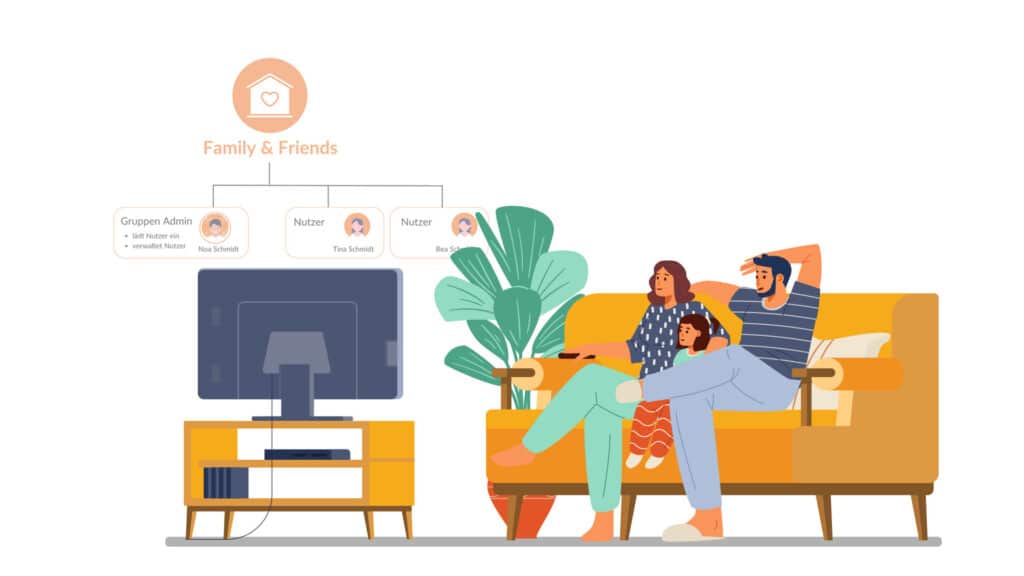
Account sharing blocks: What’s behind them and how cidaas group management supports you
Streaming providers such as Disney+ restrict the sharing of accounts in Germany.
The service models originally designed for use within a household are now to be restricted to this framework. The aim of the service providers is to authorize the use of their services exclusively within the household of the respective customer. The passing on of access data to third parties outside the household is to be restricted.
Why is account sharing suddenly prohibited?
Many users share their accounts with friends and family members outside the household in order to watch and share films and series together. Streaming services are experiencing financial losses due to shared use, which makes it necessary to adapt their business models with the help of account sharing blocks.
Disney+ stipulates the following: “Unless otherwise permitted by your subscription options, you may not share your Disney+ account with anyone outside your household. “Household” means all of the devices that are or have been used to use your Disney+ account at your primary residence and are used by people who live there.”
But what does this mean for families and friends who are used to sharing media content, as Apple or Spotify already do with their family models? There is a need for flexible solutions that allow shared use within defined groups without the need for separate subscriptions.
What do the account sharing locks have to do with cidaas?
As Identity & Access Management, cidaas provides all functions relating to user and group administration and thus the basis for modern digital business models.
If companies want to prevent account sharing, they should offer customers an alternative in return so that they can continue to operate within the context of their group.
To realize this, service providers can no longer just recognize one account or user (who could log in on different devices but in reality, combines several users) but identify the individual real users. This means providing individual users with their own user accounts and summarizing them as a group. This makes it possible to address users personally and companies create increased security through personalized access.
With group management from cidaas, streaming providers can do just that.
They offer personalized accounts that can be grouped via group management. Based on this, streaming providers can create subscription models, such as a Family & Friends subscription, which includes 4 users, for example.
Group management allows users to manage the members of the group (e.g. family members) themselves. For example, parents can invite their children to the group. This delegated user administration can also be used for authorization control. Parents can decide what content their children are allowed to stream or who is authorized to place orders and make payments.
Device management is another function of the cidaas platform that allows devices to be assigned to users. This allows users to manage their devices themselves and streaming providers can use this to effectively implement account sharing.
To summarize, with its group management and delegated user administration, cidaas offers an effective way of responding to current challenges while taking the needs of users into account.
